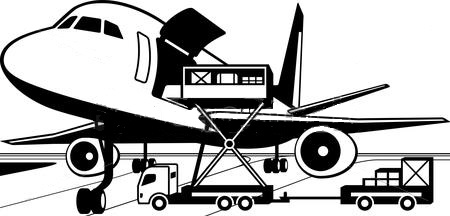Large commercial airports can be busy places, and access is usually highly restrictive and controlled. Humanitarian actors won't usually get direct access to airside operations of a major airport, but from time to time humanitarian personnel will need to gain access to and facilitate cargo alongside the aircraft. In less developed or more rural field settings, it's quite common that humanitarian actors will need to operate on or around landing strips.
Commercial Airports:
Activities in and around commercial airports tend to be highly regulated for a variety of reasons; aviation equipment is expensive and highly sensitive, customs operations may necessitate access control, and airports are considered key infrastructure choke points.
Commercial airports may have a relatively high volume of throughput, with aircraft taking off, landing and exchanging goods and passengers frequently. The immediate airspace surrounding airports is highly restricted, and only aircraft who have registered a flight plan or communicated well in advance are typically allowed to land. Air-traffic is controlled through a control tower, that typically has line-of-sight, radar and radio communication capabilities for arriving and departing aircraft. Aircraft follow a flight path on approach or take off, meaning there is a very specific route aircraft can travel long while moving around the airspace above an airport. Flight paths reduce the chances of mid-air collisions and near misses, and even helicopters and other vertical take-off aircraft are expected to follow the flight path around airports.
Controlling the flow of aircraft is vital for a functioning airport. There is a limited number of landing strips, and a limited amount of space on the ground for planes to taxi and park. Too many aircraft taking off, landing or operating on the ground can cause accidents and serious damage. It's difficult for airplanes to manoeuvre quickly while on the ground, and planes landing or taking off may collide with planes moving around a runway. Additionally, too many aircraft on the ground may lead to planes touching wings or colliding with each other, which can damage and ground an aircraft.
Large airports should have the ability to service large aircraft and manage cargo operations. Large commercial or long haul aircraft typically won't carry enough fuel for a return journey and will need refuelling upon arrival. Many large commercial aircraft also frequently require an external electrical power source to start the engine ignition process, usually referred to as a Ground Power Unit (GPU). Without fuel or a GPU, many aircraft simply cannot land in an airport even if they are physically capable of doing so - there would be no way for them to safely start their engine or take off again.
| Ground Power Unit (GPU) | Airside Refueling Truck |
|---|---|
 | 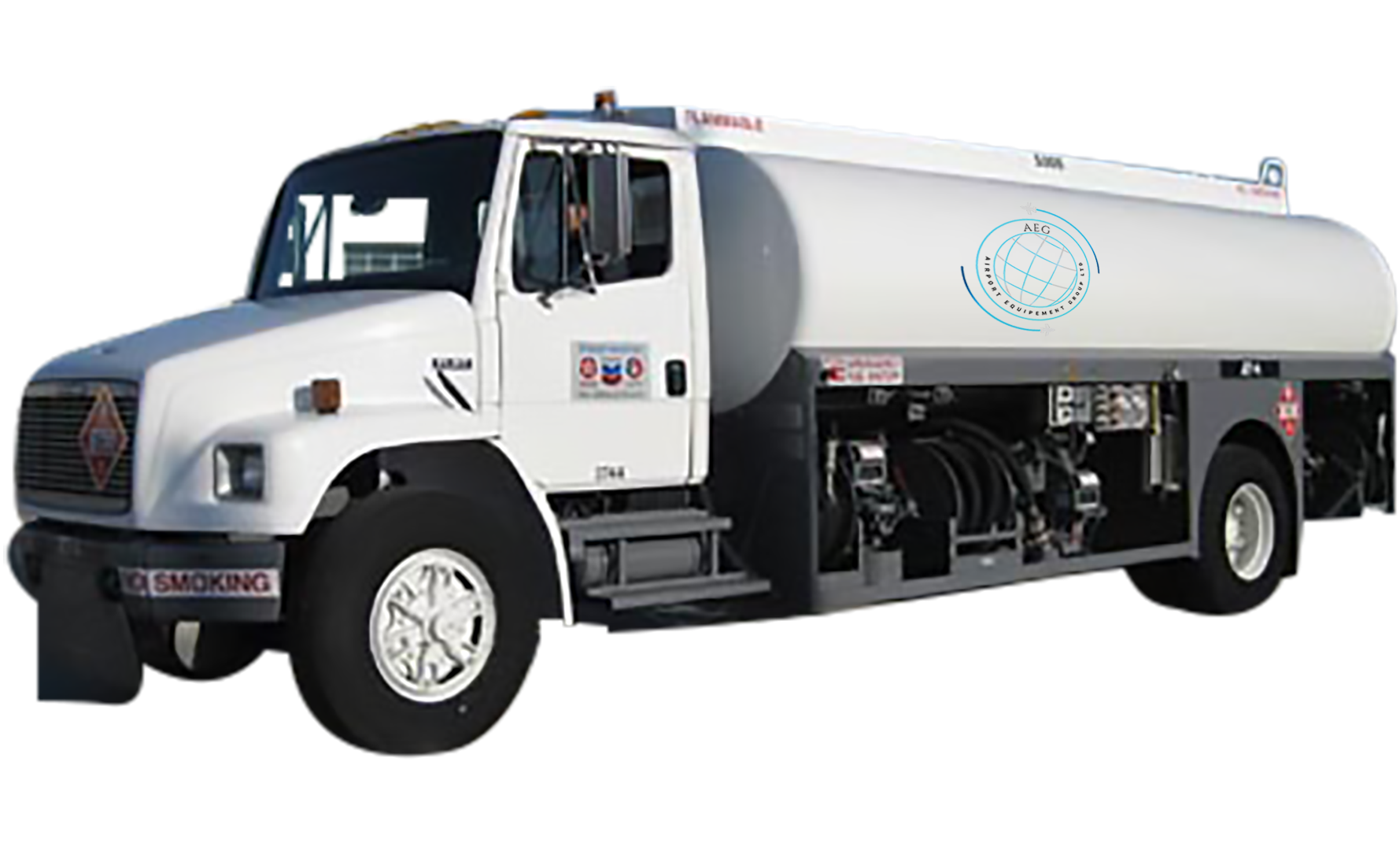 |
Large commercial airports will also have other services available for aircraft and crews. Service technicians and spare equipment may be kept on site for commonly used aircraft, especially if the airport is a hub for a commercial airline with a pre defined fleet. Commercial airports are also likely to have rapid response emergency crews, including emergency medical technicians and fire suppression systems such as fire trucks.
In rapid onset emergencies, the break down in communications equipment or airport amenities can lead to airports ceasing to function for days or weeks at a time, which can severely impact response activities.
Cargo operations in commercial airports are heavily aided by ground handling teams and specialised MHE. Many large wide-boded commercial aircraft are specifically engineered for efficient high altitude long-haul flights; this unfortunately results in aircraft bodies that are not optimised for loading or unloading. The majority of aircraft used for commercial cargo will have significant ground clearance, requiring what is called a high loader / k-loader / scissor lift, container pallet transporters, dolly's or other specialised equipment.
Example Ground Handling Equipment:
High-Loader / K-Loader / Scissor Lift - Used to lift pre-made ULDs and pallets directly to the side of large commercial aircraft. High-loaders are adjustable and can move under their own power. The flat deck of a high loader also has powered rollers that can mechanically slide cargo on to the aircraft through the appropriate opening.
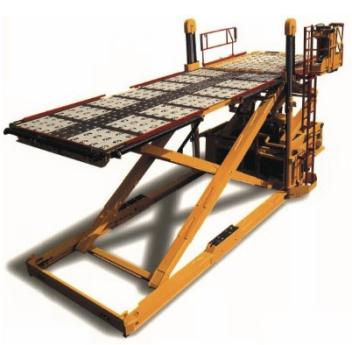
ULD / Aircraft Pallet Mover - A specialised vehicle designed to move around the oversized ULDs and aircraft pallets on a tarmac or landing strips. The pallet movers have rollers and other equipment to quickly get cargo items on and off, and work in conjuncture with high-lights and other MHE.

Belt Loader - An automated conveyor belt with adjustable height that can convey smaller items to the door of any sized airframe. Belt loaders are usually used for luggage, loose packages or small specially items. Belt loaders may also be used for aircraft that is too small to accept a high-lift.

ULD / Airplane Pallet Pull Cart - A pull cart designed to carry ULDs and pre-built airplane pallets. The pull carts are not powered by themselves, and must be pulled or pushed across the tarmac. Rollers assist offloading and loading, but cargo must be physically pushed as there is no mechanically driven process.
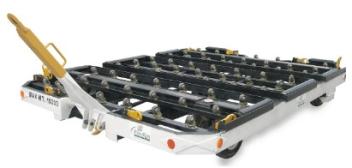
Access to the planes may be through relatively small cargo doors on the side or nose of the aircraft, though tail loading aircraft do operate out of commercial airports as well.
K-loader - Cargo requiring high lift loading alongside an aircraft
Once cargo is on the ground, it is moved around and handled by ground handling agents. If the airport has customs capabilities, there will typically be an adjacent bonded storage facility of some kind where cargo is held until it is cleared. The overall movement of cargo around an airport is highly controlled and usually quite efficient. As such, cargo operations are usually only carried out by contracted or subcontracted teams of professionals.
Airfields / Landing Strips:
In humanitarian contexts, operating small to medium sized aircraft inside specifically to aid the movement of cargo within of the area of response are quite common. In some instances, small chartered craft can be used for one or a few individual flights, while other contexts there can be specifically planned "hub and spoke" models for humanitarian air cargo operations, with smaller aircraft delivering throughout a responses from a larger central airport. In the majority of contexts, smaller air fields are entirely for domestic use. Customs is usually never going to be processed at the remote airfield or landing strip level - usually cargo offloading points in remote locations are the final leg of an in-country hub and spoke distribution system.
Remote field locations and small airfields probably will not have most, if any, of the amenities of a larger commercial airport. Aircraft operating around smaller field landing strips should have considered the following:
- Adequate surface to ground communications equipment on a usable operating band accessible by both the pilot and ground actors.
- Fuel for the return flight.
- An onboard power supply to start engines.
- Basic equipment for repairs.
Ideally, there will be an identified safety officer or team on the ground, who can ensure that the landing strip is free of debris, animals or people, and who should have the capacity to coordinate with any potential incoming aircraft regarding scheduling and landing conditions. Some landing strips may be impacted by bad weather, making safe taxi and takeoff impossible. At all times, aircraft operating in or around remote landing strips must still obey local CAA regulations, and may even need to coordinate with local military and local community leaders to avoid incidents.
Aircraft will have to be appropriate for the operating conditions, and the underdeveloped nature of many landing strips in humanitarian contexts tends to limit the size of most cargo aircraft. Aircraft will need to be able to safely take off and reach altitude based on the length of the landing strip, the anticipated cargo weight, and the outside weather conditions. Rotor wing aircraft will need to account for any potential negative side effects of their rotor down-draft while on approach, avoiding damaging homes or property, injuring humans or animals with debris, or making the landing site dangerous for other aircraft.
Cargo operations in small airfields or landing strips should match the available capacity on the ground. Most cargo at remote landing strips will need to be loose loaded and offloaded by hand. The aircraft themselves will need to be capable of being safely accessed and loaded/offloaded by relatively unskilled labour, usually with ramps or low side clearance.
Cargo offloaded using ramps - can be done easily by hand 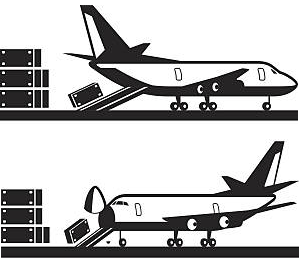 | Cargo requiring special ground equipment and MHE to offload 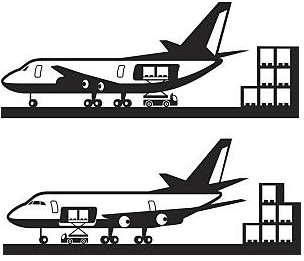 |
Physical access to landing strips may be quite unrestricted, meaning persons and vehicles may be able to operate right next to the aircraft. Any vehicles brought to the landing strip to facilitate cargo movement should be careful not to get near or damage the aircraft; an aircraft grounded in a remote location likely will not have access to special parts or sophisticated repairs for some time, effectively putting the aircraft out of service.
Personal Safety Around Aircraft
Operating on landing strips or airports can be extremely dangerous. Aircraft have extremely powerful propellers or jets, while vehicles and MHE may move chaotically around busy tarmacs. The necessity to utilize certain types of personal protective equipment (PPE) depends on the nature and size of the operation. Common PPE used around cargo aircraft might include:
- High-visibility / reflective vests
- Work gloves and close toed shoes
- Ear and eye protection
Reflective vests should always be used in airside operations where motorized ground handling equipment is used, or where multiple aircraft may be taking off/landing/taxing simultaneously. Aircraft and ground handling equipment often have very poor visibility, and their size and weight can easily harm or kill humans.
Aircraft propulsion can also be extremely loud, and operating within any close proximity to an aircraft with jets or propellers turned on can easily permanently damage hearing. Hearing damage may be acute and rapid, or it may accumulate over time. Ground crew operating around active aircraft at any time should wear proper ear protection at all times. Any person travelling in a helicopter for any period of time should also always wear ear protection. Some older fixed wing aircraft also may require passengers to wear ear protection.
Aircraft have powerful propulsion systems to keep them in flight, and these propulsion systems are extremely dangerous to be around when the vehicle is not in flight. When moving around a landing strip or airport tarmac, never under any circumstances approach a jet turbine, helicopter blade or propeller while it is in motion, unless it is under the direct supervision of qualified ground safety personnel. Turbines, blades and propellers should also be avoided if the aircraft engine is running or the operating status of the aircraft is unknown.
When operating around an airfield, never assume freedom of movement. Airfields and airports are often highly restricted environments, and air and ground handling crews won't necessarily expect the presentence unauthorized persons. Before operating in any space where aircraft land, take off, or are repaired, refueled or loaded/offloaded, consult with airport authorities and your local security focal point.


